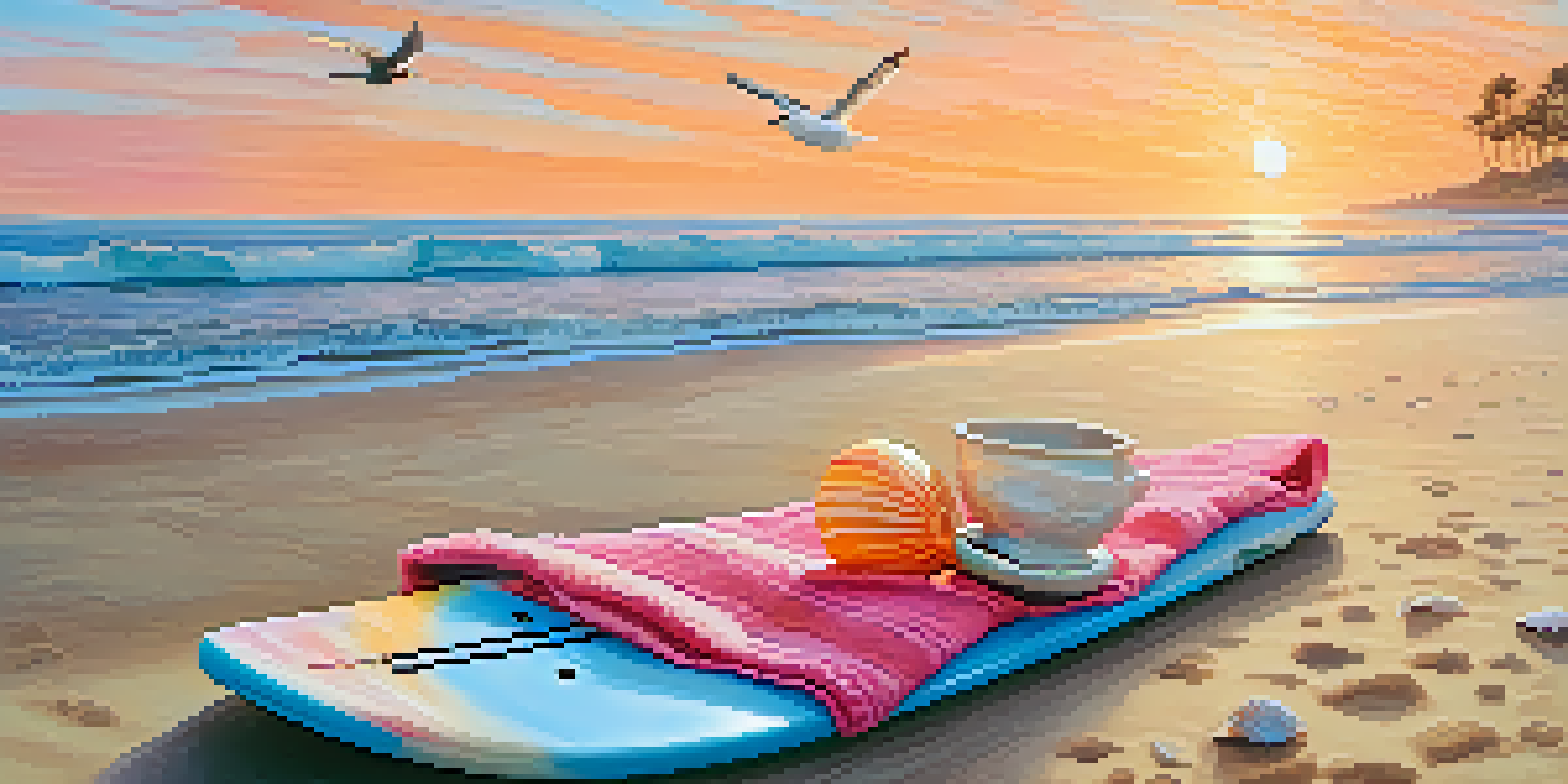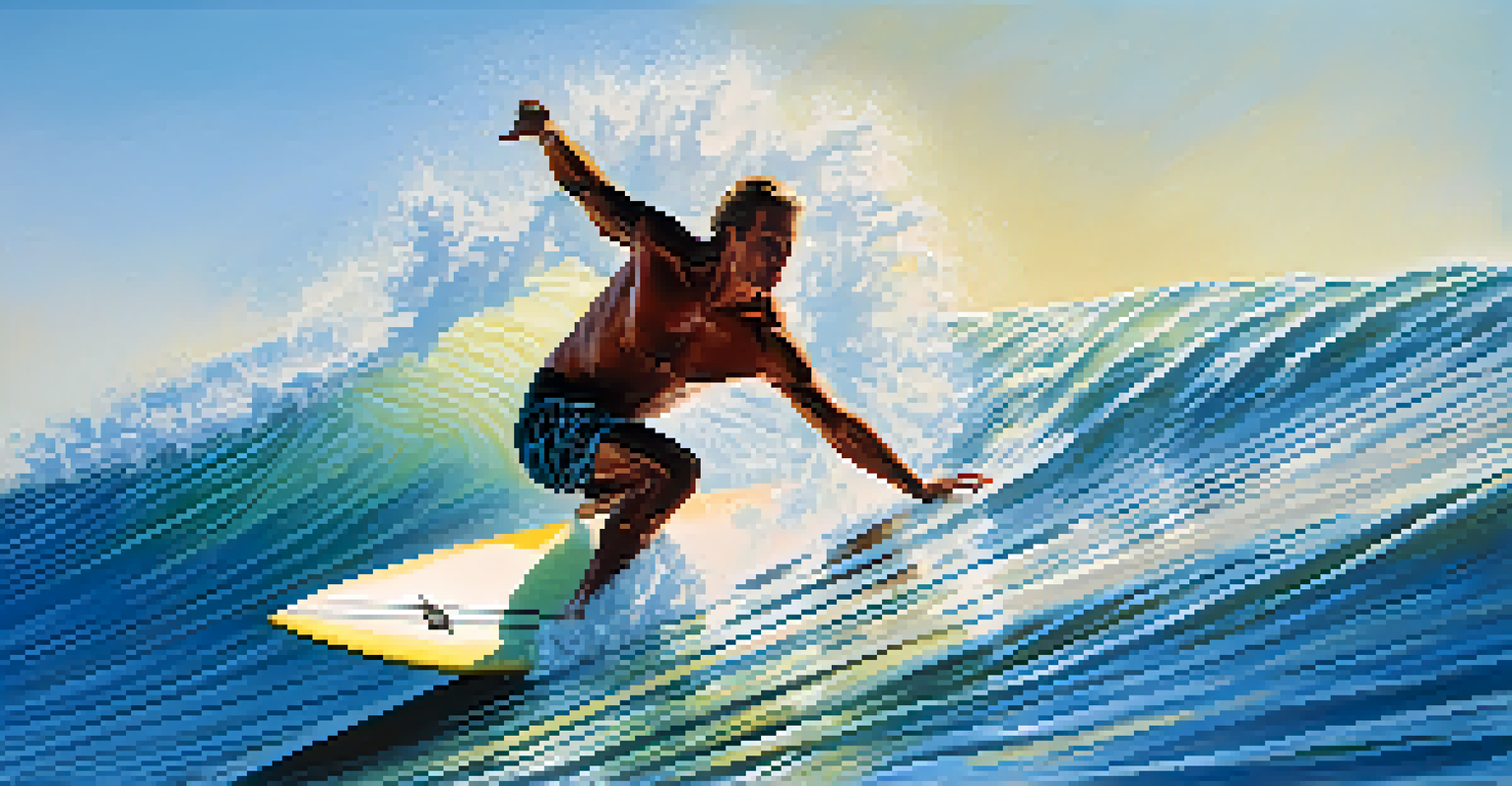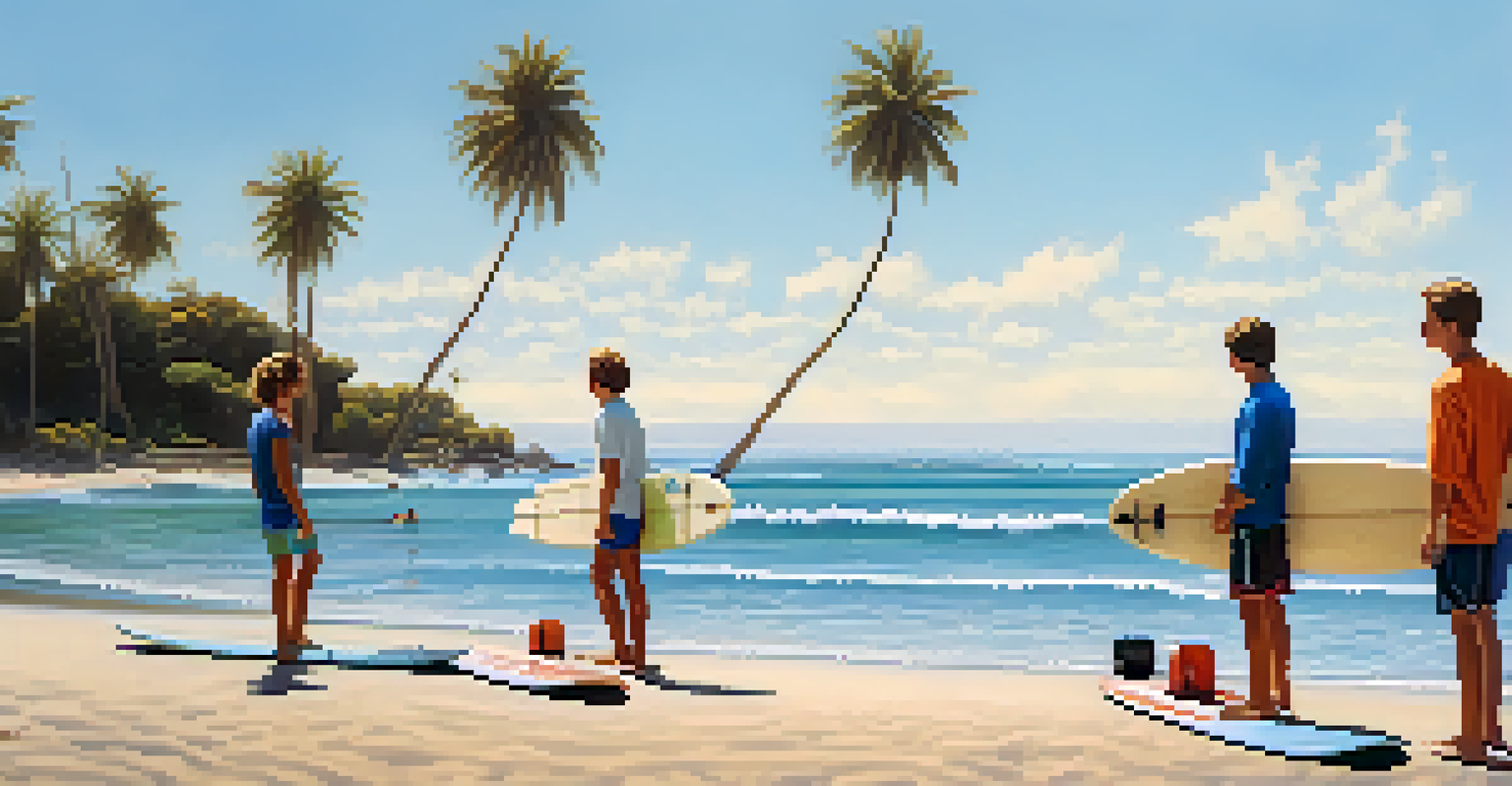Surfing 101: Essential Tips for Beginners and Experts

Understanding the Basics of Surfing: The Right Gear
Before hitting the waves, it's crucial to have the right gear. For beginners, a soft-top longboard is often recommended due to its stability and ease of use. Experts may prefer a shorter board for agility and speed, but the key is choosing a board that matches your skill level.
The best surfer out there is the one having the most fun.
In addition to your surfboard, don’t forget about a wetsuit, especially if you're surfing in colder waters. A good wetsuit will keep you warm and comfortable, allowing you to focus on your technique rather than the chill. Accessories like surf leashes and wax are also essential for safety and performance.
Lastly, consider the importance of sunscreen. Protecting your skin from harmful UV rays is vital, regardless of your surfing expertise. Opt for a water-resistant, reef-safe sunscreen to ensure both your health and the environment are safeguarded.
Choosing the Right Surf Spot: Factors to Consider
Not all surf spots are created equal, and choosing the right one can significantly affect your experience. Beginners should look for beaches with gentle waves and minimal currents, while experienced surfers may seek out more challenging breaks. Checking surf reports can provide insights into wave conditions and suitability.

Local knowledge is invaluable when it comes to surf spots. Engaging with other surfers or surf schools can provide tips on where to paddle out and what to expect. Remember, every location has its own unique characteristics, so take the time to learn about them before diving in.
Essential Surf Gear for Beginners
Having the right surfboard, wetsuit, and accessories is crucial for a comfortable and safe surfing experience.
Lastly, consider the crowd factor. While it can be fun to share the waves with others, too many surfers in one spot can lead to accidents and frustration. Finding a less crowded wave can enhance your enjoyment and allow for more practice without the pressure of competing for space.
Mastering the Surfing Stance: Finding Your Balance
Your stance on the board is critical for balance and control. Most surfers adopt either a regular stance (left foot forward) or goofy stance (right foot forward). Experimenting with both can help you find what feels most natural, as comfort is key to improving your surfing skills.
Surfing is the most beautiful sport in the world.
To practice your stance, try standing on your board on land. This allows you to familiarize yourself with the balance required. Incorporating yoga or balance exercises can also enhance your core strength, making it easier to stay upright once you hit the water.
Remember, the ideal stance should be relaxed yet stable. Keep your knees slightly bent and your weight distributed evenly. As you progress, you'll develop an intuitive sense of balance that adapts to the wave conditions.
Paddling Techniques: Getting Into the Wave
Paddling is an essential skill that can make or break your surfing session. To paddle effectively, lie on your board with your chest elevated and feet hanging off the tail. Use a freestyle motion with your arms, alternating your strokes to maintain momentum without exhausting yourself.
Timing is crucial when it comes to catching waves. Start paddling when you see a wave approaching and match its speed. As the wave lifts your board, give a final push to ensure you’re positioned to pop up as it breaks.
Choosing the Right Surf Spot
Selecting a surf location based on your skill level and wave conditions can significantly enhance your surfing experience.
Additionally, practice your paddling in calm waters to build strength and stamina. The more comfortable you become with paddling, the easier it will be to catch waves, allowing you to focus on your surfing technique.
The Pop-Up: Transitioning from Lying to Standing
The pop-up is a pivotal moment in surfing that transforms you from a paddler to a rider. To execute a successful pop-up, you'll want to push up with your arms while simultaneously dragging your feet beneath you. This movement should be fluid and quick, allowing you to catch the wave at its peak.
Practice your pop-up on dry land first. This will help you develop muscle memory and confidence. Focus on positioning your feet in the right spots as you rise. A common setup is having your feet shoulder-width apart, with your back foot centered over the tail for control.
Don’t worry if you don’t nail it on your first try. It takes time and repetition to perfect your technique. Keep practicing, and soon you’ll find yourself standing tall on your board, enjoying the ride!
Riding the Wave: Tips for Staying on Your Board
Once you've mastered the pop-up, the next challenge is riding the wave. Keeping your body low and centered over the board is crucial for maintaining balance. Bend your knees slightly and look towards where you want to go, rather than down at your feet.
It’s essential to read the wave’s movements. Understanding how the wave breaks can help you navigate it effectively. Aim to ride along the shoulder of the wave, which is the most powerful and smoothest part, giving you the best chance to maintain speed.
Mastering the Surfing Techniques
Practicing key skills like paddling, the pop-up, and riding the wave are essential for improving your surfing abilities.
Practicing your turns is also vital as you progress. Learning how to shift your weight and pivot on your board will enhance your control and allow you to maneuver through the wave with ease. The more you ride, the more intuitive it becomes.
Safety First: Essential Surfing Etiquette
Surfing comes with its own set of rules and etiquette that every surfer should follow. Always respect the right of way: if someone is already riding a wave, don’t paddle in and try to catch it. This not only keeps the lineup organized but also helps prevent accidents.
Be mindful of your surroundings and other surfers. Maintaining a safe distance is key to ensuring everyone has a good time in the water. If you fall, make sure to pop up quickly to avoid being a hazard to others.

Lastly, always be aware of the conditions and your own skill level. If waves are too big or the current too strong, it’s okay to sit out a session. Safety should always be your top priority, allowing you to enjoy surfing for years to come.
Continuing Your Surfing Journey: Learning and Progression
Surfing is a lifelong journey, and there’s always something new to learn. Consider taking lessons from experienced instructors to refine your technique and gain valuable insights. This can be especially helpful when transitioning from beginner to intermediate or advanced levels.
Joining a local surf community can also provide support and motivation. Sharing experiences and tips with fellow surfers can enhance your skills and make the learning process more enjoyable. Plus, it’s a great way to meet like-minded individuals who share your passion.
Finally, don’t forget to celebrate your progress, no matter how small. Each wave ridden and each skill mastered contributes to your overall journey. Keep pushing your limits and, most importantly, enjoy every moment spent in the water.